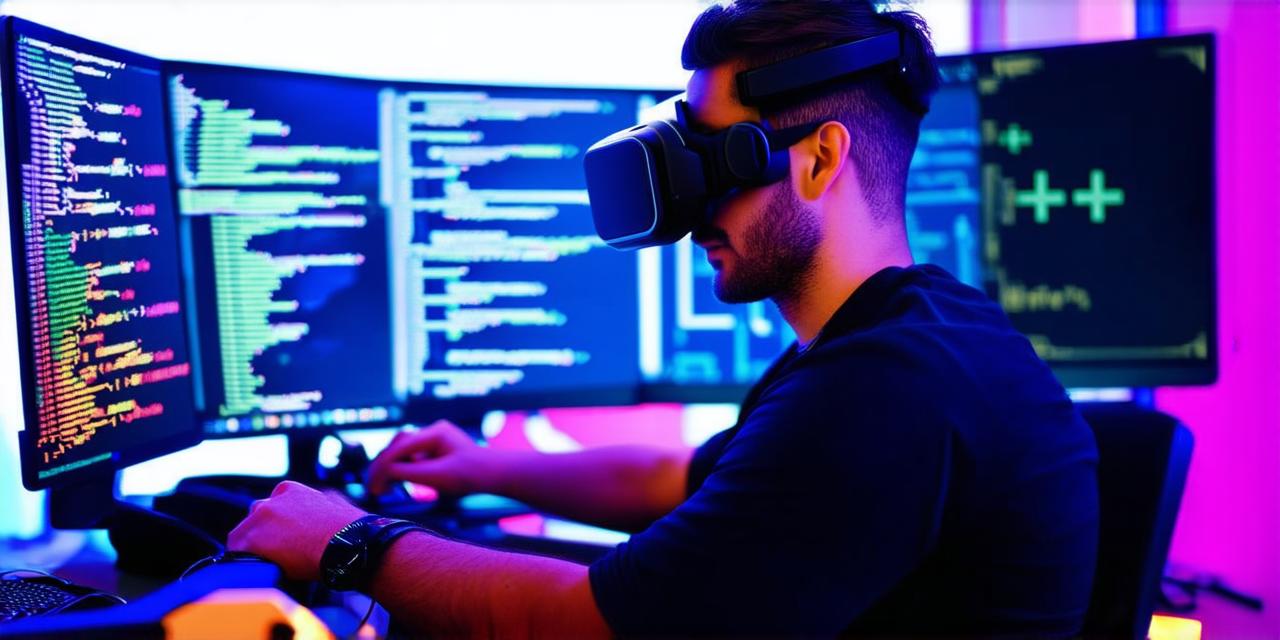Virtual reality (VR) technology has come a long way in recent years and is becoming increasingly popular for gaming, education, and other applications.
As VR continues to grow in popularity, so does the need for skilled developers who can create immersive and engaging VR experiences. However, with so many programming languages available, it can be difficult for beginners to determine which one is best for VR development.
In this article, we will explore some of the most popular programming languages for VR development and discuss their strengths and weaknesses.
We will also provide some real-life examples of VR applications that have been developed using these languages to help you make an informed decision about which one is right for your needs.
Unity
Unity is one of the most popular programming languages for VR development, with a large community of developers and a wide range of tools and resources available. Unity is a cross-platform game engine that supports a variety of VR platforms, including Oculus Rift, HTC Vive, and PlayStation VR.
One of the key strengths of Unity is its simplicity and ease of use. It has a user-friendly interface and a wide range of built-in assets and tools that make it easy for beginners to create VR applications. Additionally, Unity supports scripting in C, which is a popular programming language that is widely used in the game development industry.
Another strength of Unity is its flexibility and scalability. It can be used to create everything from simple VR demos to complex enterprise-level applications. Unity also has a large ecosystem of plugins and third-party tools that can be used to extend its capabilities and add new features to your VR applications.
Some real-life examples of VR applications developed using Unity include “Job Simulator” by Oculus, which allows users to simulate various workplace tasks in a VR environment, and “Beat Saber” by Beat Games, a music rhythm game that has become one of the most popular VR games of all time.
Unreal Engine
Unreal Engine is another popular programming language for VR development, with a focus on real-time graphics and performance. It is used by many professionals in the gaming industry and has been used to create some of the most visually stunning VR applications.
One of the key strengths of Unreal Engine is its advanced graphics capabilities. It supports a wide range of graphics technologies, including physically based rendering, which can create highly realistic visuals with accurate lighting and shadow effects. Additionally, Unreal Engine has a powerful physics engine that can be used to simulate realistic physical interactions in VR environments.
Another strength of Unreal Engine is its flexibility and scalability. It can be used to create everything from small indie games to large-scale AAA titles. Unreal Engine also has a large ecosystem of plugins and third-party tools that can be used to extend its capabilities and add new features to your VR applications.
Some real-life examples of VR applications developed using Unreal Engine include “The Lab” by Valve, which is a collection of VR experiments and games, and “Astro’s Playroom” by Sony, which showcases the capabilities of the PlayStation VR controller.
C++
C++ is a powerful programming language that is often used for VR development due to its low-level control and high performance. It is used by many professionals in the gaming industry and has been used to create some of the most demanding VR applications.
One of the key strengths of C++ is its ability to provide direct access to hardware resources, which can be useful for optimizing performance and achieving high frame rates in VR environments. Additionally, C++ is a highly flexible language that can be used to write efficient code and create complex algorithms.
Another strength of C++ is its compatibility with a wide range of platforms and hardware, including VR headsets and game consoles. This makes it a popular choice for developers who want to create cross-platform VR applications that can run on multiple devices.
